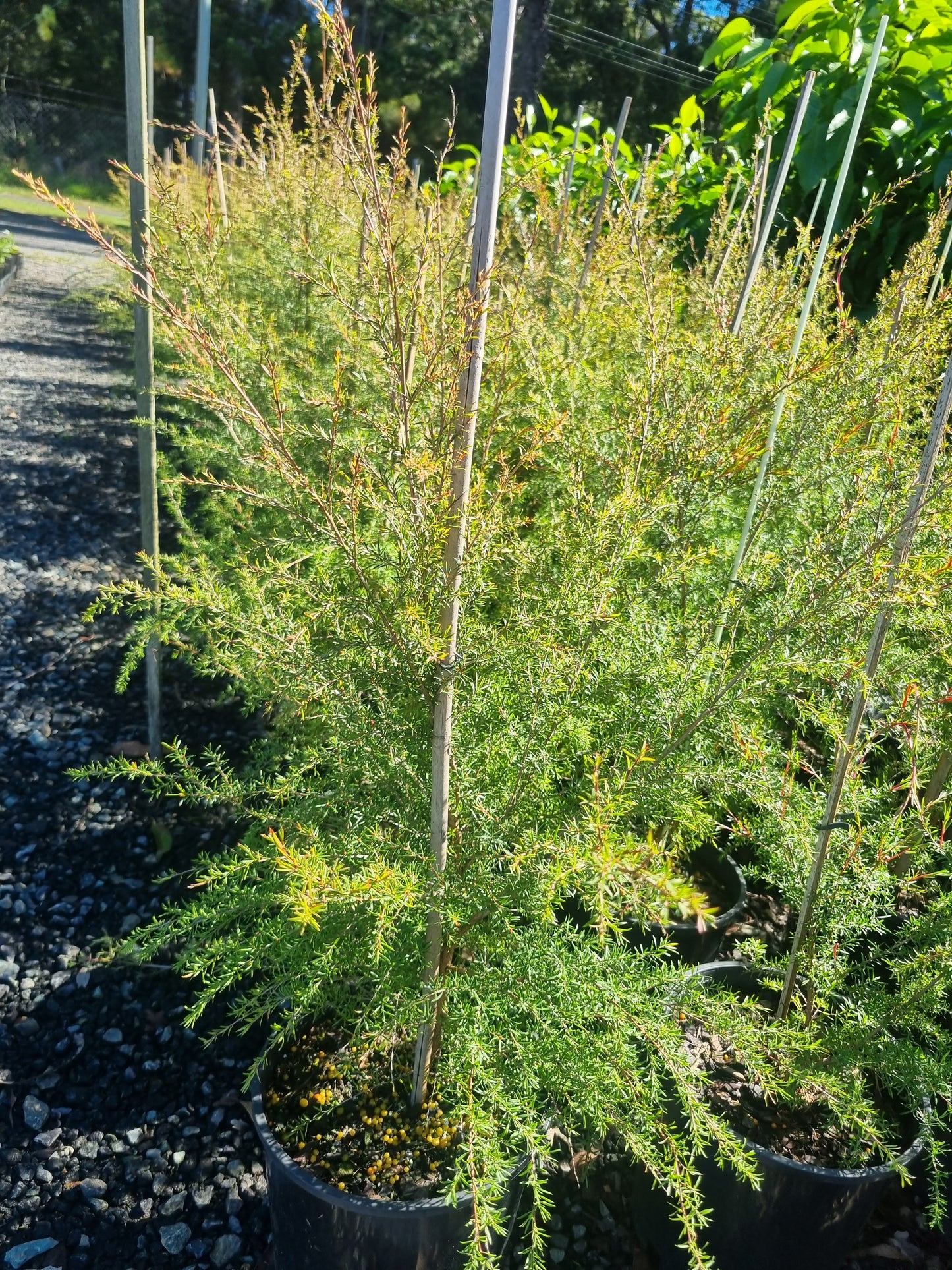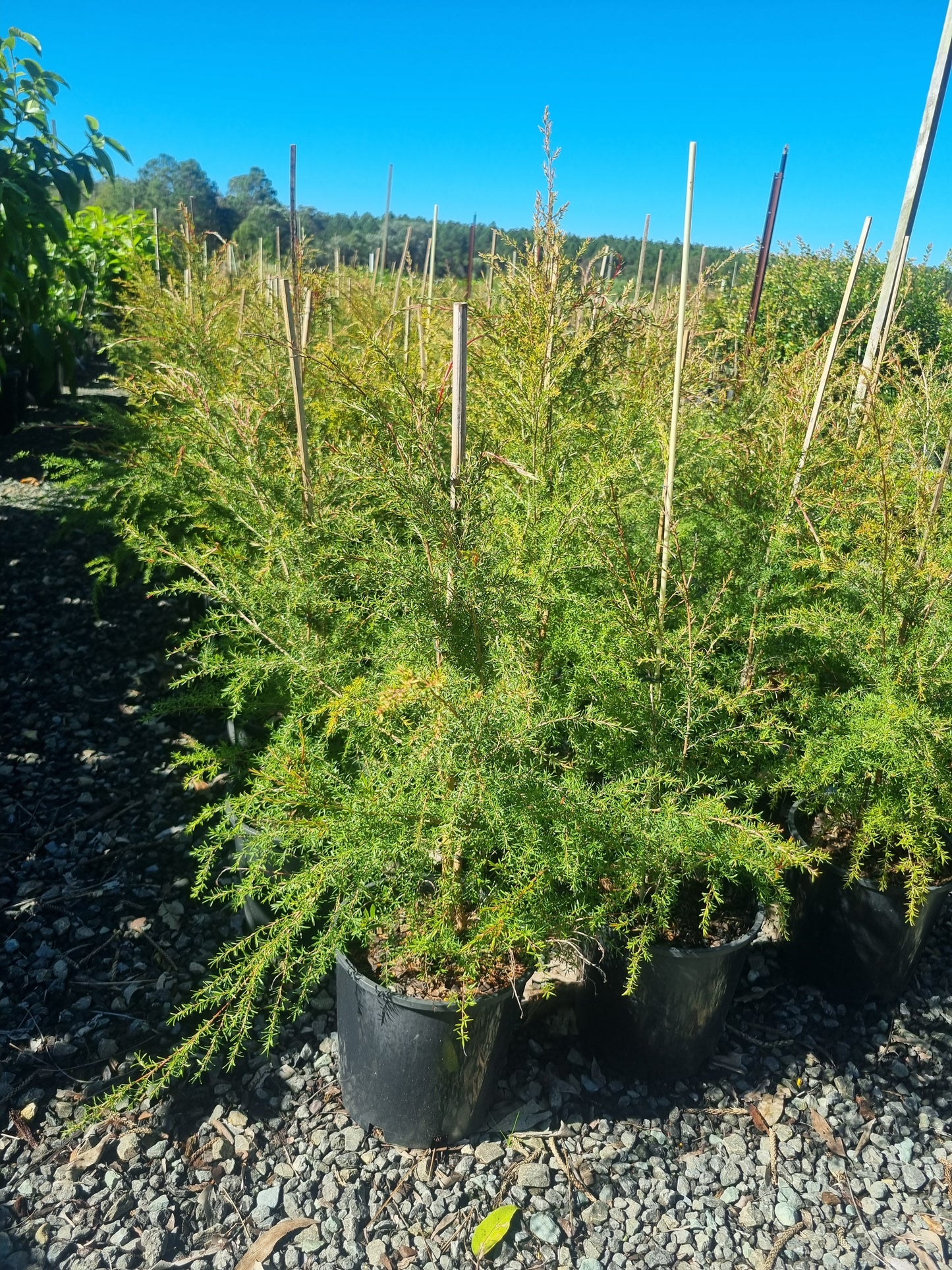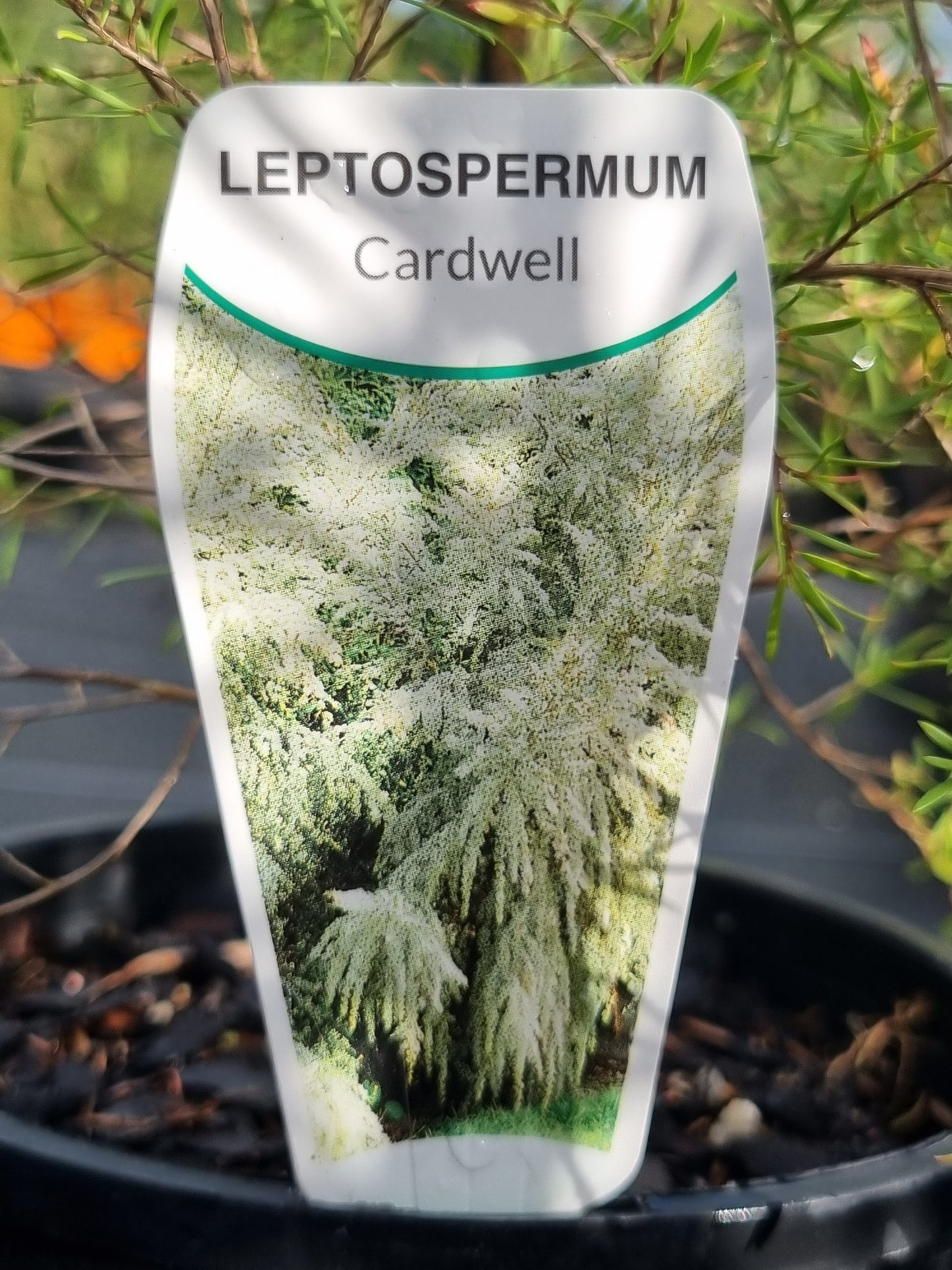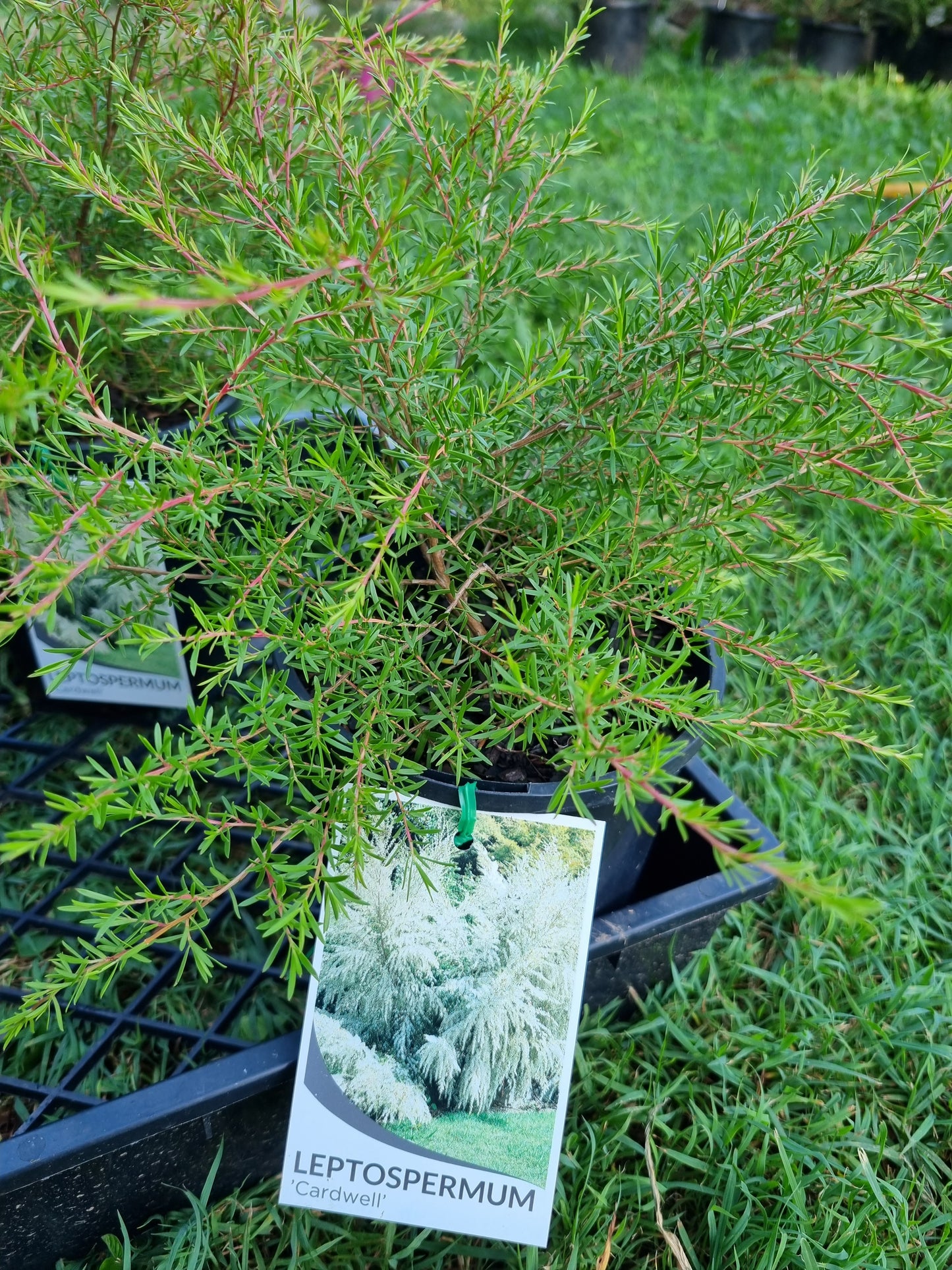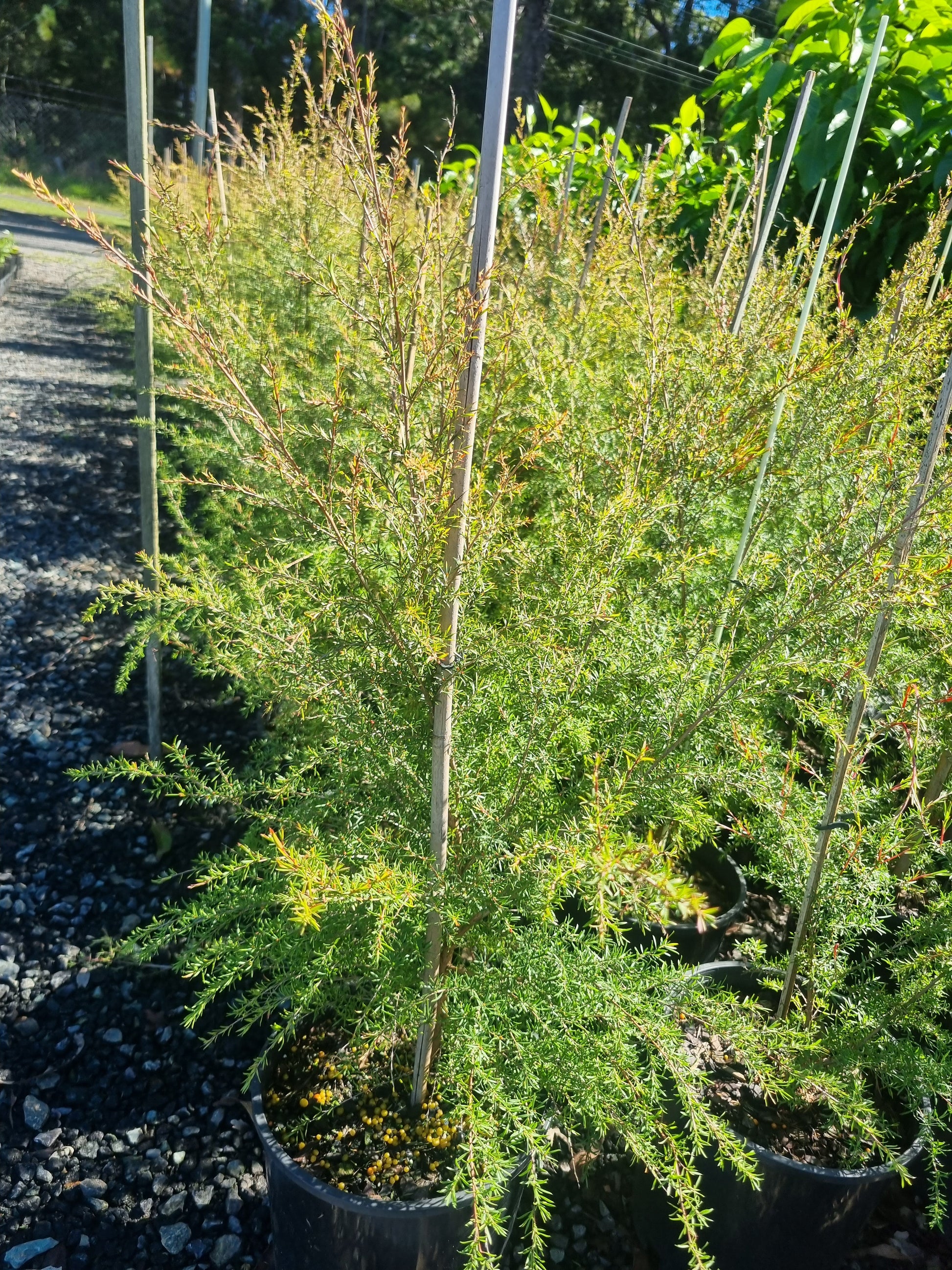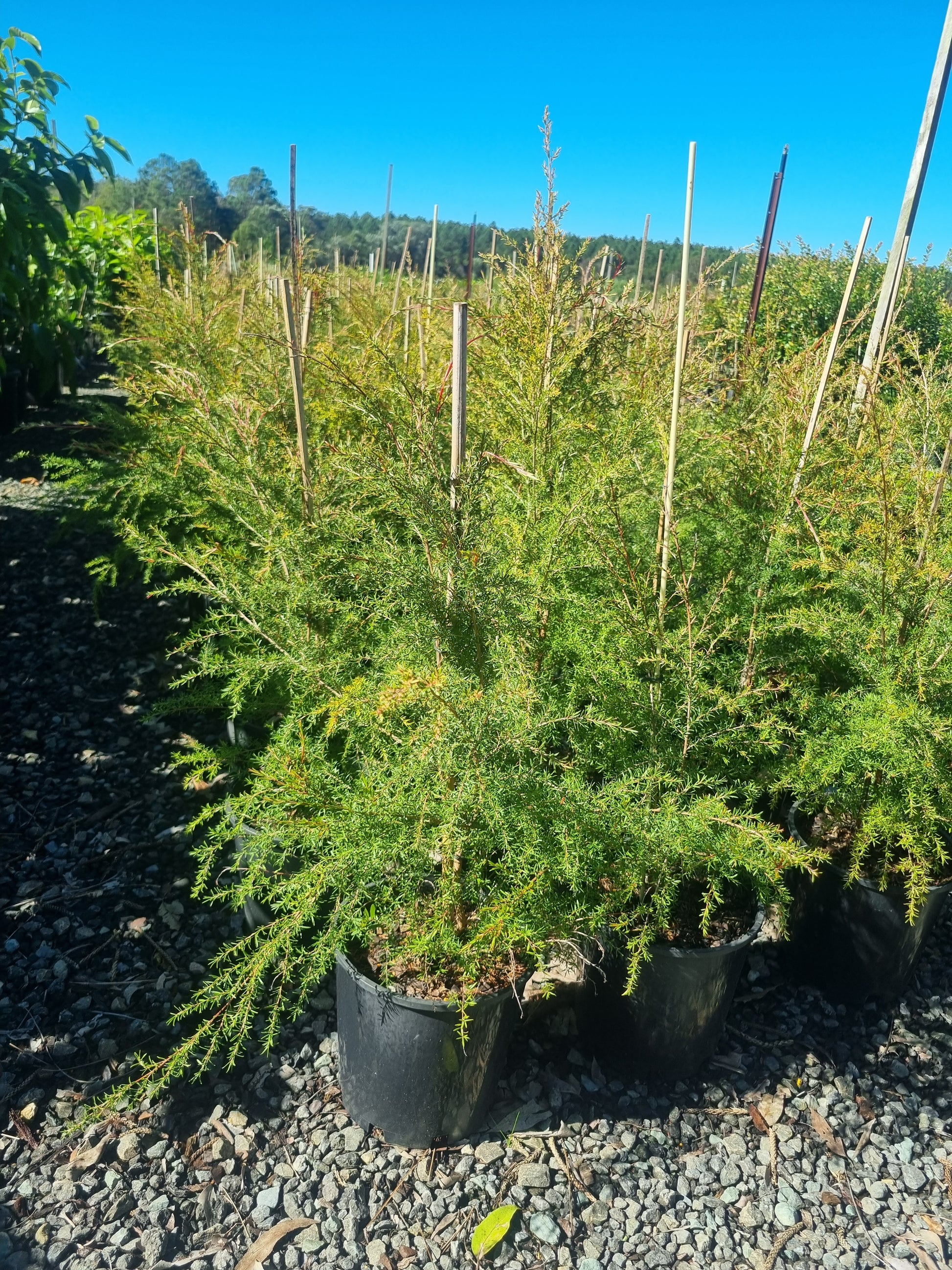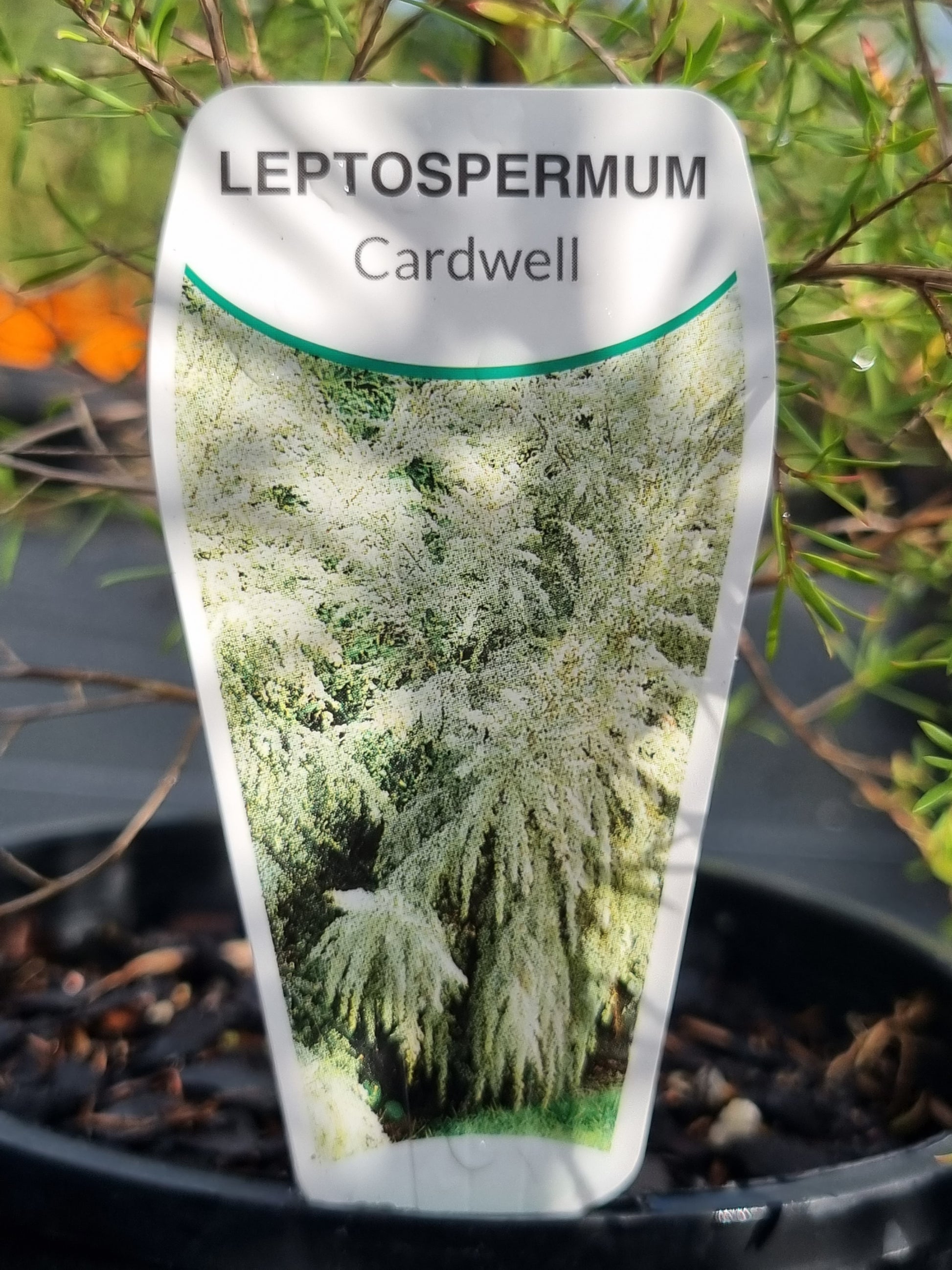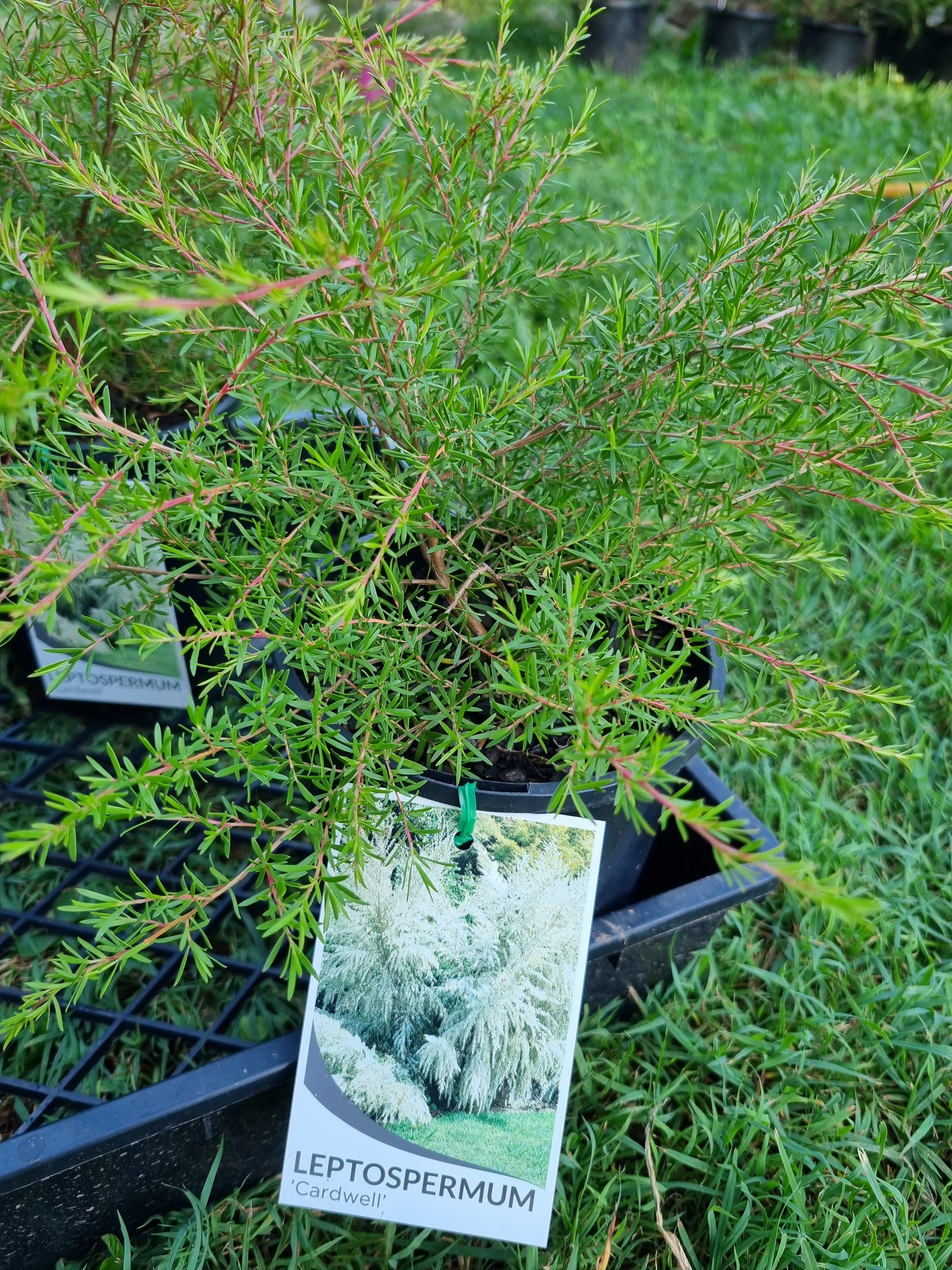Delivertree
Leptospermum flavescens 'Cardwell'
Leptospermum flavescens 'Cardwell'
Couldn't load pickup availability
Leptospermum flavescens 'Cardwell' is a graceful, weeping evergreen shrub known for its mass of white spring flowers and excellent adaptability to coastal conditions. Highly attractive to bees, it’s a must-have for beekeepers and a valuable addition to native gardens. With low maintenance needs and high ornamental appeal, it suits a range of garden uses from screening to feature planting.
Quick Overview:
- Height and Width: Grows from 2–3 meters tall and wide
- Foliage: Evergreen with fine, slender leaves
- Flowers: Masses of white flowers in spring that completely cover the plant
- Growth Habit: Weeping, cascading form
- Position: Prefers a sunny, open position
- Soil: Moist, well-drained soils; tolerates wet and dry conditions
- Tolerance: Light frost tolerant
- Maintenance: Occasional pruning recommended to maintain compactness and encourage flowering
- Etymology: Leptospermum from Greek leptos (thin) and sperma (seed); ‘Cardwell’ refers to the town of Cardwell in northern Queensland
Detailed Description:
Leptospermum flavescens 'Cardwell' is a standout Australian native cultivar loved for its weeping form and dense spring flowering. Its branches arch gently, becoming cloaked in white blooms that provide a luminous display and strong pollinator attraction, particularly for bees. The fine evergreen foliage brings texture and year-round greenery.
This shrub is especially suited to coastal and exposed locations, thriving in full sun with moist, well-drained soil. It tolerates both wet and dry periods, as well as light frosts, making it a hardy choice for gardens seeking beauty with minimal fuss.
Its versatility allows it to be used as a feature plant, a privacy screen, or a windbreak. The plant is highly effective in pollinator gardens and is often recommended for beekeepers, thanks to the abundance of nectar its flowers provide.
Growth and Maintenance:
Leptospermum 'Cardwell' is a low-maintenance shrub once established. For best results:
- Prune for symmetry after flowering to maintain a tidy, dense shape
- Remove any dead or crossing branches from inside the shrub to improve airflow and structure
- Train a central leader if a small tree form is preferred; prune competing upright growth during early development
- Alternatively, it can be left in its natural form with a “set and forget” approach
- Tolerates light frost and performs well in both wet and dry soil conditions once mature
Common Uses:
- Feature shrub in native or coastal gardens
- Informal screen or privacy hedge
- Low windbreak in exposed positions
- Bee-friendly and pollinator gardens
- Mass planting for seasonal floral impact
- Coastal revegetation and habitat creation
Planting Benefits:
- Aesthetic Appeal: Cascading form and seasonal mass-flowering create high visual impact
- Versatility: Suitable as a feature, hedge, or windbreak
- Coastal Adaptability: Thrives in exposed seaside and variable soil conditions
- Bee Attraction: A favourite among beekeepers for its nectar-rich blooms
- Low Maintenance: Can be lightly pruned or left to grow naturally, depending on your garden style
Leptospermum 'Cardwell' combines classic beauty with coastal toughness, making it an excellent choice for a wide range of Australian garden styles.
Share
